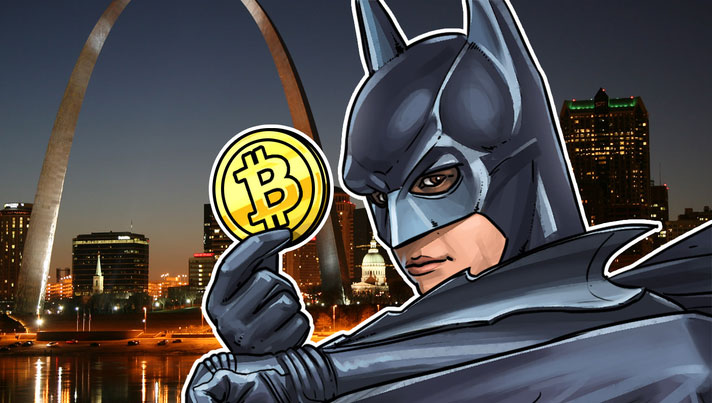
The need to transfer cryptocurrency sooner or later arises for almost every user. For activeThis is a routine operation for traders. Investors are faced with sending coins less frequently. But both groups have a risk of losing funds, writes RBC Crypto.
There can be many reasons - for example, an error when copying an address or an unspecified tag for forgetfulness. There are several steps you can take to avoid this.
The procedure for transferring cryptocurrency is quite simple. It assumes the following procedure:
- The user selects the cryptocurrency that he wants to transfer;
- Then he opens the address on the exchange, in the wallet or on any other site, to which the funds will be received, and copies it;
- Next, he indicates the address on the exchange or wallet from where the funds will be sent;
- Enter the amount;
- The final step is to confirm the withdrawal of funds. If coins are poisoned from the exchange, you will most likely need to confirm the transaction via email and two-factor authentication (2FA).
When sending cryptocurrency, you need to verify many data. If you miss something, you will have to say goodbye to money.
It is important that the coins and the wallet where the funds will gobelonged to the same cryptocurrency... If you try to transfer Ethereum usingBitcoin address, coins will be lost forever. Now many cryptocurrency exchanges have a built-in function that prevents such errors: a warning is displayed that the address is incorrect.
You need to make sure that the addresscopied completely... Usually users copy the address by highlighting itcursor. There is a risk that not all characters will be captured, for example, the first or last character will appear. Transferring cryptocurrency to the wrong address will result in a complete loss of funds.
It is advisable to copy the address using the built-infunctions. On many sites, you can click a button that will copy your address to the clipboard. But in this case, additional attention will not hurt. Sometimes exchanges freeze and no copying occurs. Because of this, the funds will not go to the desired wallet, but, for example, to a phone number, website, or just a set of words that remained in the clipboard.
Be sure to check the addresses -and the one from which the funds will be transferred, andthe one where they will go. You can limit yourself to checking the first two and last two characters - it’s faster. But it is safer to check the entire address, since there is a risk of becoming a victim of a virus. There are many malicious programs on the Internet that replace addresses copied to the clipboard with scammers’ wallets. Antiviruses help protect you, preferably with a fresh updated database.
Don't fall for phishing sites... Scammers can misappropriate your cryptocurrency yetin one way: create a fake page for a cryptocurrency wallet, exchanger, exchange, mining platform or any other service. In such cases, it is very difficult to distinguish a scam site from a real one. If you indicate your data on it or transfer funds to the wallet specified there, they will be lost.
Specify and check the tag... When sending cryptocurrencies to exchanges in somecases need to specify the tag. This is a small code that allows marketplaces to differentiate between user accounts. The tag can be found in your exchange account next to the wallet address. If you do not specify it, the funds will go to the exchange, but will not be credited to your balance. Perhaps the problem can be solved by contacting technical support, but the likelihood of this is low.
The tag may be required when sending the following tokens:
- Cosmos (ATOM)
- EOS (EOS)
- Ripple (XRP)
- Stellar Lumens (XLM)
- Binance Coin (BNB)
- NEM (XEM)
- Monero (XMR)
Use stablecoins... When sending cryptocurrency, you can lose somecapital on exchange rate fluctuations. This can be avoided by transferring funds in stablecoins such as USDT, BUSD, USDC and others. Their price is pegged to the dollar and cannot suddenly drop by 15-20%, as it happens with many digital assets.
Check commissions... You can incur minor costs forcommissions. Exchanges charge them for withdrawing funds. However, each coin usually has its own withdrawal rate, which makes it possible to save money. For example, it usually costs $ 3-5 to withdraw BTC or ETH, while the cost of transferring XRP and TRX tokens is a few cents.
Gained great popularity in 2020DeFi platforms. Operations on them are carried out through smart contracts: the user buys coins from his local wallet and can send them to the exchange using the same transaction.
Not all exchanges support smart contracts... Usually the corresponding warning platformindicates next to the user's wallet address. If you ignore it, the funds will reach the exchange, but will not be credited to the trader's balance. Often this issue is resolved with the help of technical support.
Start small... The first translation, especially when it comes tounfamiliar services, it is better to do it for a small amount. This will help you not to lose funds if it turns out that the platform belongs to scammers or your wallet does not work on it. There is also a risk that when the coins are withdrawn, the transaction will freeze due to network congestion. The delay may be several hours, during which time the funds will be frozen. Accordingly, you can lose on the fall in the value of the sent asset.
In early September, a user whose name is notdisclosed, sent $1 million in USDT stablecoins to a smart contract address instead of a wallet. The funds were considered lost forever. But the trader was lucky - he was helped by Paolo Ardoino, technical director of Tether, which is the issuer of USDT. He returned all the funds to him and urged him to be more careful.

5
/
5
(
1
voice
)




